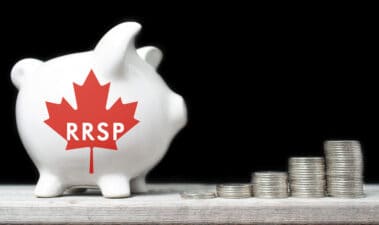The Tax-Free Savings Account (TFSA) is a flexible investment vehicle that’s useful to all Canadians, young and old.
You can use it to save for any financial goal. You can use it to grow your wealth by leveraging the full power of tax-free compounding. Or you can transform it into a source of tax-free income that’s yours to collect while you sleep.
Young investors should shoot to grow their TFSA wealth with growth stocks, but for retirees who’ve found their CPP pension isn’t nearly enough to finance a retirement that’s anything close to comfortable, it’s all right to sacrifice some growth in your TFSA for income.
Unlike your CPP pension, which is subject to taxation, any dividends or distributions paid out to your TFSA are entirely free from tax if you haven’t broken any of the simple TFSA rules (not overcontributing or conducting “business trading” activities). That doesn’t mean that every retiree should go all-in on the highest-yielding security possible, though.
You see, capital gains are also free from the insidious effects of taxation. And although many retirees I’ve spoken with claim that they “don’t care” about share price appreciation or depreciation potential, only giving thought to the magnitude and stability of the dividend, the fact remains that principal risk and growth potential still very much matter for retired investors.
Such dismissive retirees may think they’re immune from a share price collapse in a said security, but they’re actually not, even with a supposedly “indefinite” investment horizon.
Why?
Emergencies and significant contingent expenses happen, and if worse comes to worst, you could find yourself in a situation that’ll require you to raise funds by selling a chunk of your income investments at a big loss amid a market-wide meltdown. Thus, it’s vital to not take the potential for capital gains or losses completely out of the equation.
If you’d invested in investments that can provide you with a blend of growth and income, the odds of selling at a loss, even in a recession, would be significantly reduced over time.
So, with that in mind, it’s prudent to find the optimal balance of growth and income such that you’d be able to live a comfortable retirement today and allow your TFSA to grow over time to give you enough wiggle room to deal with potential financial setbacks later in life.
Have a look at your budget and ask yourself how much additional monthly cash you’d need on top of your TFSA to live a comfortable lifestyle. Do the math and figure out the dividend yield you’d need on your TFSA, rather than opting for the arbitrary 4% rule or chasing the highest possible “sustainable” yield you can find.
If your pension is paying you $900 per month, and your “comfortable lifestyle” budget calls for $1,400 per month, configure your TFSA such that it’s able to provide you with $500 in monthly income — no more, no less.
With a $100,000 TFSA, you’d need to average a 6% yield and a stock like Enbridge would do the job while still allowing you to grow your principal (and dividend) over time. And in 10 years, you’d have less of an issue dealing with a contingent expense, as it comes to be given both your income and your nest egg would have likely increased considerably.
Foolish takeaway
By seeking to balance income and growth rather than focusing solely on income, one can not only provide themselves with enough tax-free income to retire on comfortably but also deal with unforeseen financial setbacks that have derailed “sustainable” retirements of many Canadians who didn’t give themselves enough additional financial wiggle room.
Stay hungry. Stay Foolish.







